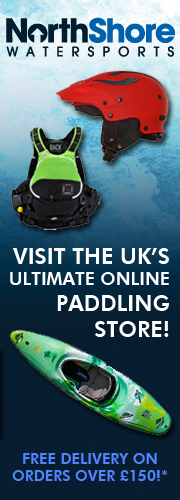For those coaches amongst us, we all love sharing our enthusiasm for the sport and seeing our students pick up the skills we teach them. But when was the last time you thought about the evidence that backs up the way we coach?
As a full-time secondary school teacher, I’m always being pestered about the importance of ‘evidence-based practice’ and cognitive science. That is, making sure that the way we teach is backed up by plenty of proof that it works. But if we want to help train solid paddlers (in addition to ensuring people enjoy the sport of course), surely this is something we should be thinking about as coaches? To save you the trouble of trawling through endless pages of research, I’m going to walk you through some of the main evidence-based ideas in teaching and how I take them from the classroom to the river.[1] In this article, I’ll be looking at how we can help paddlers to build schemas.
Put simply, a schema is our mental map of information that we have stored in our brain. Even though we might pick up ideas and knowledge in a random way, we organise it in our own mental schema that helps us to make connections between ideas and facts that we already know. For example, if I say the word “kayak” to you, you might be able to talk to me about different disciplines of paddlesports, different models of kayak, locations where we can do it, equipment we need etc. This is your schema for “kayak”.
Cognitive scientist John Hattie compiled the research of over 800 educational studies in his book Visible Learning to look at the impact each of teaching strategies on learning. One of the areas that he identifies as being particularly effective is thinking about how we help learners develop these schemas in order to give ‘deeper meaning’ to pieces of information. To ensure that what we teach people sticks, we need to help them organise this piece of information into a well-structured schema. This is just like how you or I would file an electronic document into a specific series of folders so we can find it again later.
Well, how do I make this happen in my coaching sessions? It’s quite simple really. I think about how all the different strokes and techniques that we coach are connected, and I make sure that the links are clear to the paddlers I coach. I’ll give you an example. In whitewater kayaking, what do breaking out, punching through holes and boofing all have in common? They can all be achieved with just two well-timed strokes…
When you break out of the flow, you reach past the eddy line and take a well-timed powerful stroke to power you in at just the right time (with the right edge and body rotation too) and often take a second stroke to back it up if necessary. When you punch through a hole, you reach beyond the seam of the hole and take a well-timed powerful stroke to pull yourself through and a second to back it up and avoid getting sucked back in. When you boof, you reach to the downstream side of rock or vertical face of water and take a well-timed… Are you getting the picture? I take the same approach to all sorts of skills: body rotation; use of the feet; turning strokes; rudders etc.

So, all the paddlers I coach across medium- or long-term coaching programmes understand that these are three moves that all have similarities. Though we do different things with our edge, trim, rotation and angle for each, the fundamental strokes are at least similar. There are obvious benefits to this approach. Having a good understanding of how different moves are interconnected in kayaking not only makes them more memorable, but it also allows you to paddle in a more fluid way and link moves more smoothly. As a coach, it also reduces the range of explanations we need to give because our explanation of several different strokes will have core similarities. This is easier for the paddler too, who has to remember less techniques and can focus on paddling well and having a great time!
If you reckon this is something that you’d like to try in your own coaching, then here are three quick tips to get you started:
- Plan backwards: Think about the harder strokes first and then what they have in common with more basic skills. This way you can plan on how you will help build a paddler’s schema through a logical sequence of skills or techniques.
- Be consistent: Try and be consistent with the language that you use when working through a sequence of skills. For example, in the sequence I showed above, I start calling the 2-stroke sequence a “boof stroke” right from breaking in and out. This means that the paddler will hear the same phrases from me right the way through from learning to break out, to punching holes and boofing.
- Make links obvious: To really nail down a paddler’s schema, you need to help them organise it in a logical way. When new skills come up that link to ones your paddler already knows, say so! Likewise, if a stroke you’re teaching will be relevant in a different context that you might teach in the future, make this clear.
I hope that the idea of using schema building strategies in your coaching has been food for thought. It’s by no means a prescriptive way of coaching, but rather something to think about and to try out with your own paddlers. Let me know how you get on!
Article by: Shahid Wahab
[1] I should make it clear here that this research is generally gathered from classroom-based studies rather than outdoor sports coaching. However, given that most of the research centres around memory and knowledge, I think it is reasonable to try and apply this in a coaching context.



A really good, clear and easily understandable explanation of ‘Schemas’ and their application to paddlesport coaching.